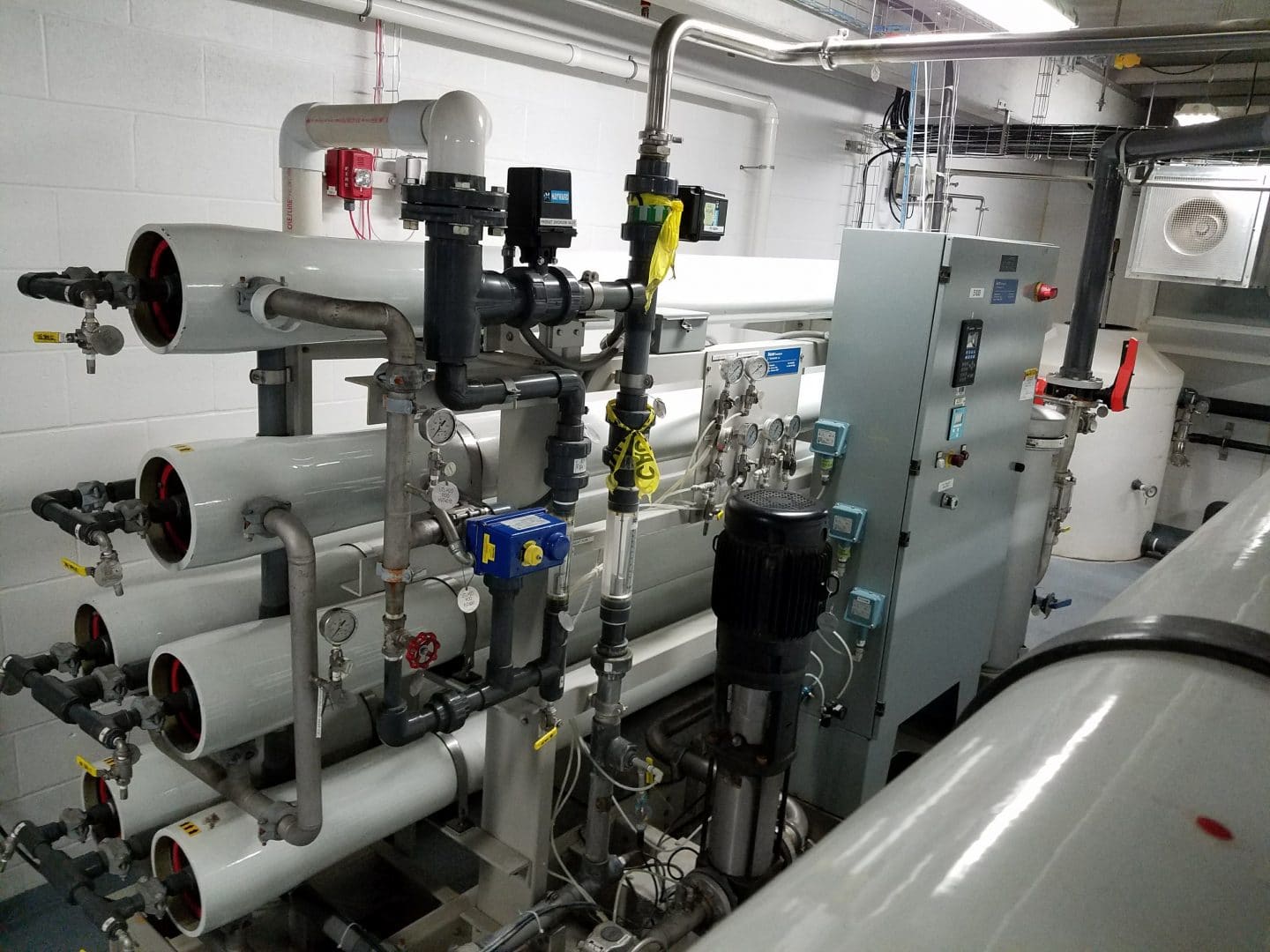What Makes Up a Complete Reverse Osmosis System?
What Makes Up a Complete Reverse Osmosis System?
A typical reverse osmosis system is much more than just a single RO Component. A complete Reverse Osmosis System generally includes several other components that work together in a system, such as:
Pre-Treatment – this includes carbon filters to remove chlorine, iron, manganese and sulfur filters, water softeners or ant-scalant systems.
Storage and Distribution – RO systems make water slowly, so a tank is required. There are two (2) types of tanks – atmospheric and bladder types. Atmospheric types are typically bigger and since there is no bladder to supply back-pressure, the water quality is higher in an atmospheric tank verses a bladder tank. Smaller systems (generally under 1, 000 gpd often use bladder tanks from 14 to 80 gallons, while larger volume systems use atmospheric tanks from 75 gallons to 2, 000 gallons. When using an atmospheric tank a booster pump must be utilized to re-pressure the water and distribute it.
Post-Treatment This includes ultraviolet disinfection (UV) or ozonation to kill bacteria, pH adjustment to raise the pH or add some hardness back to the water and/or deionization to totally demineralize the water.
Instrumentation Monitoring the end water quality is often desirable, so a number of instruments and analyzers are available to facilitate that.
Designing a Commercial-Industrial RO System
A commercial RO functions at its highest level when it is fed into an open-air or atmospheric tank. With no back-pressure from the bladder of a pressurized storage tank, a commercial RO will deliver water that is extremely low in TDS; it’s not unusual for the TDS to be near ZERO when the RO is discharged into an atmospheric pressure tank. In food service applications or other applications where extremely low or ZERO TDS is not critical, a bladder tank can be utilized, but if a manufacturing process calls for extremely low TDS water, then the atmospheric tank is the best solution.
Proper pre-treatment is necessary for successful and economical operation of a commercial RO system. The water needs to be as soft as possible or an anti-scalant needs to be fed ahead of the system to prevent membrane scaling. In most cases, a water softener and backwashing carbon filter are the preferred method of pretreatment.
An atmospheric tank is required for storage of the RO water, and Complete Water Solutions offers atmospheric tanks in sizes from 20 gallons to 20,000 gallons, as well as every size in between. Additionally, the water needs to be re-pressurized out of the atmospheric tank(s) so several pumps of high purity water are offered as well as ultraviolet disinfection, UV, which kills any airborne or waterborne bacteria which could intrude into the atmospheric tank.
Additionally, Complete Water Solutions Deionization, DI, of the water for ultrapure applications, such as laboratory water and semiconductor manufacturing, as well as instrumentation and monitoring.
Contact us for help designing and implementing a new industrial reverse osmosis system! Complete Water Solutions has been in the industry for years and we know reverse osmosis inside and out!


